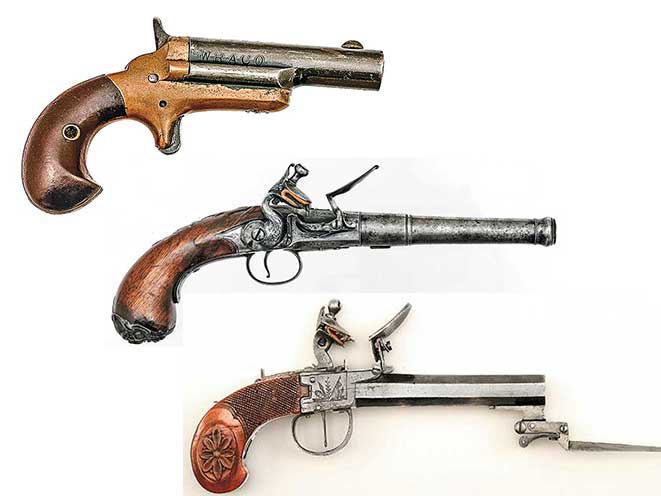The topic of historic pocket pistols alone is nothing short of innovative. After all, they’ve evolved over the last 200 years.
Throughout their history, pocket pistols have changed yet fundamentally remained the same. Their monikers include “pocket,” “muff,” “coat,” “derringer,” “boot,” “vest,” “palm” and “subcompact” guns. They have spanned a range of action types, from single- or multi-shot varieties to muzzle- and breech-loading models. Regardless, these guns are small, concealable, and pack a punch for close-range self-defense. Because of their diminutive size yet bold power, they have been in high demand by both men and women since the 18th century.
Pocket pistol variants are too numerous to recount. Therefore, the following highlights only some major inventions in this evolution. The story of the pocket gun is one of increasing popularity, with a sizable history that eclipses its small stature.
Advertisement — Continue Reading Below
Queen Anne
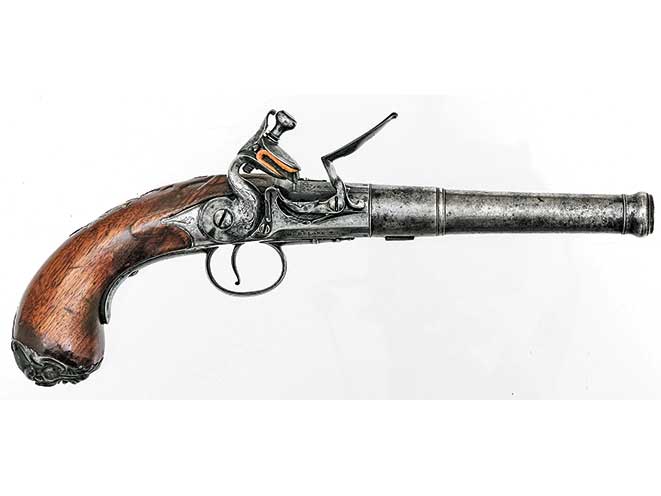
First on our list is the Queen Anne, invented in 18th century England. The reigning Queen Anne of Great Britain was its namesake. The single-shot flintlock is easily recognizable. This is because the breech and trigger plate are forged into one piece with the lock plate. The Queen Anne firearm is an early breechloader that is loaded by unscrewing the breech with a barrel key.
Despite its female namesake, both men and women used Queen Anne pistols. They were produced in a variety of sizes, with most being considered coat-sized. An even smaller variant was colloquially referred to as a “muff” pistol. This is because it could fit within a woman’s hand warmer. These guns were a status symbol among men and women of the English elite.
Advertisement — Continue Reading Below

The primary purpose of single- and multi-shot flintlock pocket pistols was self-defense. Many single-shots featured spring-operated daggers. Multi-shots, known as “room-sweepers,” protected against several assailants. Pocket pistol production was trending upwards well into the 19th century.
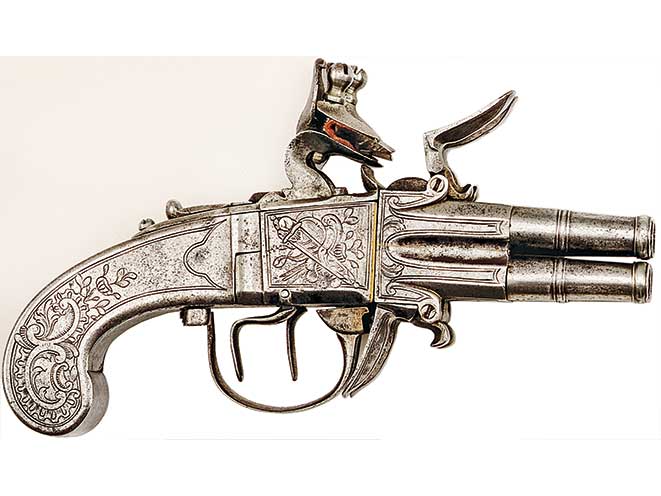
Advertisement — Continue Reading Below
Pocket Icon
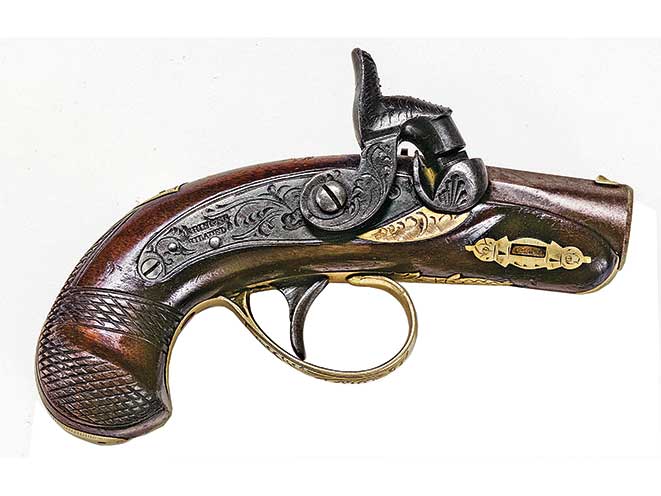
In the 19th century, the most iconic pocket pistol was the Philadelphia Deringer. Invented in 1852 by Philadelphia gunsmith Henry Deringer, this gun was a .41-caliber, vest-sized, muzzle-loading percussion pistol. It is probably one of the most renowned historic pocket pistols.
Deringer never sought a patent for his invention, which provided an opportunity for entrepreneurs to capitalize on his success. While some manufacturers stole his design outright, others avoided trademark infringement and thus became creative with their copycat guns. One company hired a tailor, John Deringer, just so they could use his name on their products. Predominantly, however, major manufacturers intentionally misspelled the firearms as “derringers” or derringer-types.
Advertisement — Continue Reading Below
Initially, derringers appealed to military officers but soon became the gun to carry for civilian use. Well-known manufacturers like Colt and Remington produced their own derringer pistols in a range of calibers. This diversity contributed to the popularity of these guns for both men and women.
Revolver Revolution
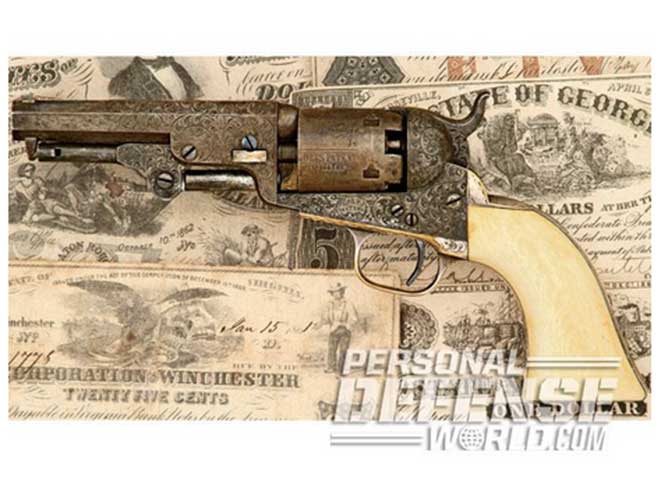
The revolver was first patented in America by Samuel Colt in 1836. Numerous manufacturers mass-produced the revolver. Pocket models were either smaller versions of larger firearms, such as the Colt Model 1849, or had shortened snub-nose barrels, such as the Webley Bulldog revolver.
Advertisement — Continue Reading Below

Initially, men were the primary purchasers of pocket revolvers. They were used mainly by military and law enforcement personnel in the 19th and 20th centuries. These guns also played such a significant role on the frontier that towns had to implement concealed-carry laws. In the early 20th century, Smith & Wesson developed the .22-caliber LadySmith to appeal to women.

Advertisement — Continue Reading Below
The popularity of this gender-directed marketing has persisted into the 21st century. Manufacturers continue to develop small revolvers, including a 1989 re-release of a heavier-caliber version of the Lady Smith. Even though these guns remain popular, they are not necessarily at the epicenter of today’s market.
Semi-Auto Standard
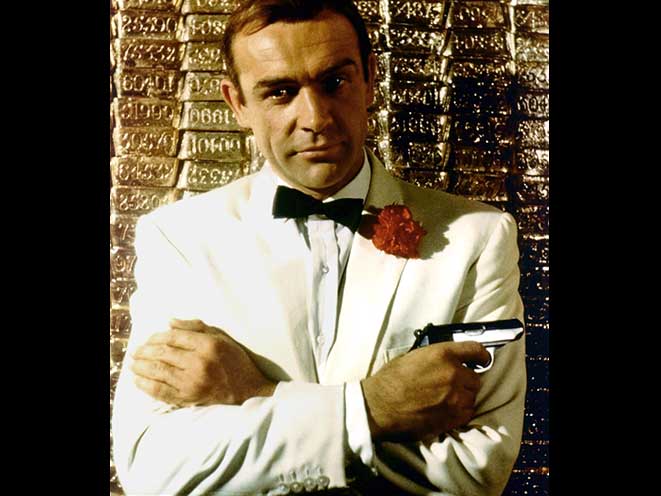
Two early 20th-century inventions marked the birth of the contemporary pocket pistol market. First, John Browning invented a self-loading semi-automatic handgun, which was used initially in larger-frame firearms. Second, Browning developed the .380 ACP (also known as the 9mm Kurz or 9x17mm) in 1908.
Advertisement — Continue Reading Below
The .380 was initially developed for Colt’s semi-automatic blowback design. It later became the official cartridge of several foreign militaries. In 1912, Fabrique Nationale of Herstal, Belgium, introduced it to the European market as the 9mm Browning Short. In the 1930s, Walther designed the PPK to chamber the .380 ACP. Twenty years later, it would forever serve as an icon in popular culture due to the James Bond franchise.
While the .380 ACP has become synonymous with the current pocket pistol market, many debate its efficacy. At the time of its invention, it had more stopping power and was a better cartridge than its competition, the .32 ACP. But in today’s market, it is not as powerful as the 9mm in terms of muzzle velocity and energy. However, it does allow for reduced weight and size and still emits a higher velocity than most light handguns.
Then & Now
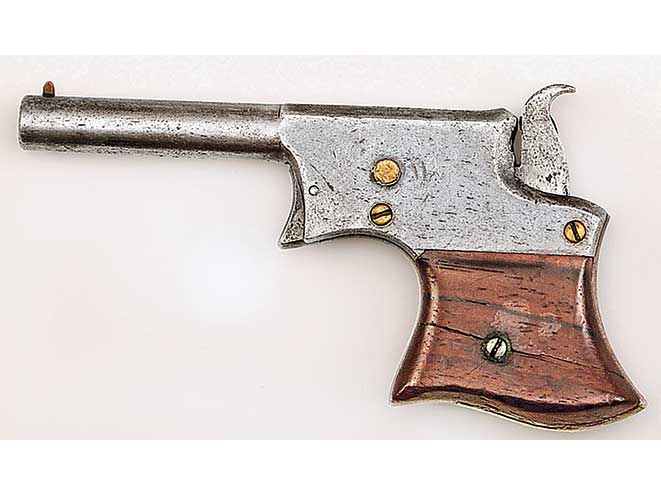
Advertisement — Continue Reading Below
The effectiveness of pocket guns is debatable. The 1800s was an era when pocket pistols were referred to as “mouse guns”. The moniker refers to firearms that are too small to be effective for self-defense. But despite negative associations, their popularity on the market has persisted for more than 200 years.
The pocket pistol provides an adequate tool for concealed carry. It also represents a diverse group of firearms owners. The pocket pistol is lucrative for the industry, but only time will tell if renewed enthusiasm for small-framed guns will continue. Whatever happens, historic pocket pistols will always prove to be a unique look into the past.
